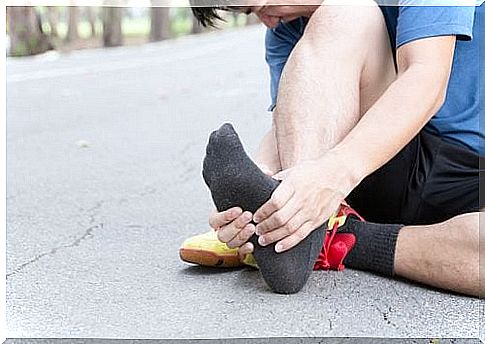Plantar Fasciitis: Causes, Symptoms And Therapy

Plantar fasciitis is inflammation of the plantar fascia of the foot, a ligament that connects the heel to the proximal phalanges and that stretches and contracts with each step, like elastic rubber.
The plantar fascia, or arcuate ligament, is a very wide and thick fibrous fascia structured in such a way as to withstand the great pressure applied by the body.
Inflammation of the arcuate ligament occurs in the form of localized pain in the heel area, and is one of the most frequent inflammations related to this area.
Sportspeople suffer most from this inflammation, especially those who practice sports at an amateur level.
Everything you need to know about plantar fasciitis
Risk factors
- Sports with repeated sequences of exercises.
- Foot pronator.
- Diseases such as athritis and diabetes.
- Inadequate footwear.
- Flatfoot.
- Old age.
- Obesity.
- Hormonal impairment.
How does it manifest itself?
The excessive effort to which the plantar fascia is subjected can cause microtrauma in the tissue that composes it. The continuous occurrence of microfractures inflames this fibrous cord causing pain in the heel area.
It is a chronic disease that does not occur overnight, but is the result of repeated injuries.
Causes
These lesions are due to different, multifactorial and variable causes , among which we find environmental, postural and genetic factors.

Some factors aggravate the pain, such as wearing inadequate footwear, poor posture, poor flexibility of the muscles associated with the plantar fascia, excessive strain on this part of the body, and excessive pronation of the foot.
Intensive physical activity
Continuous and intense physical activity is the main cause of plantar fasciitis.
Activities such as running or jumping continuously and for a long time cause an overload of the ligament which, unable to withstand this pressure, tears. Sudden changes in sports habits, if they occur without a previous adaptation process, can cause even more serious lacerations, accompanied by more intense pain.
The people who are most at risk of suffering from this disease are athletes, footballers, badminton players and tennis players.
Foot anatomy
There are several anatomical structures that allow plantar flexion and which can, therefore, cause overload of the plantar fascia.
The Achilles tendon is a ligament that runs from the gastrocnemius muscle (or twin muscles) and from the soleus to the heel. The contraction of the Achilles tendon causes an increase in pressure on the calcaneus and, subsequently, an increase in pressure on the arcuate ligament.

Another anatomical factor to consider is the support of the foot, which is the way in which the foot rests on the ground. Flat feet or pronation tendency cause greater strain of the plantar fascia increasing the risk of tissue tearing due to the increased pressure exerted.
Other diseases
Diseases such as diabetes and arthritis are considered risk factors for the development of plantar fasciitis, as both can cause inflammation of the tendons.
Plantar fasciitis usually occurs as a result of one of these two diseases in the elderly.
Type of footwear
Very often we wear unsuitable footwear, which provides us with an insufficient support surface or an unequally distributed cushioning of the foot.
Repeated use of inadequate footwear leads to plantar fasciitis, among other possible injuries. Heeled shoes are absolutely among the least indicated.
Symptomatology
- Increased pain intensity in the morning.
- Chronic pain.
- Pain that occurs in the form of stinging or burning.
- Progressive pain.
Pain usually increases in the morning as a result of foot stiffness at night and decreases as the tissue relaxes and warms.
Sometimes the pain can become unbearable and also affect the phalanges by preventing movement of the toes.

Often the presence of plantar fasciitis occurs in conjunction with the development of the heel spur, although it is not a defining symptom.
When plantar fasciitis is not treated properly or is neglected for too long, the patient may experience an alteration in gait and later report other symptoms such as pain in the knees, shoulders or neck.
Plantar fasciitis therapies
- Physiotherapy.
- Non-steroidal anti-inflammatory drugs.
- Suitable footwear.
- Corticosteroids.
- Orthotics.
- Functional bandages.
- Orthosis.
It is necessary to abandon sporting activity during the entire duration of the treatment, as it would aggravate the situation; Instead, it is right to carry out muscle stretching aimed at the soleus or gastrocnemius muscles.
Some doctors suggest using supports at night or in moments of rest to keep the plantar fascia stretched.
Among the innovations recently introduced we mention shock wave therapy and surgery. The use of the latter is intended for chronic cases. Recovery time varies from patient to patient.









